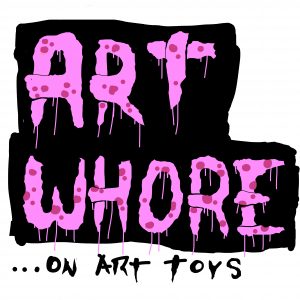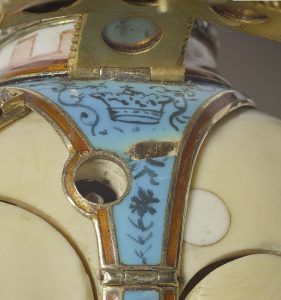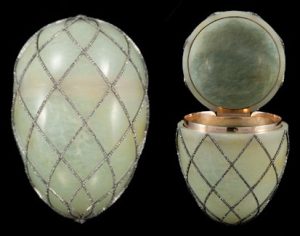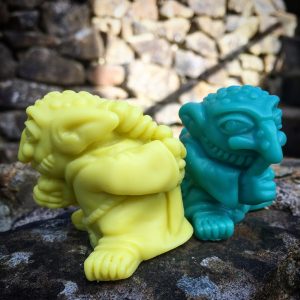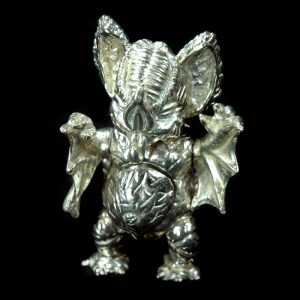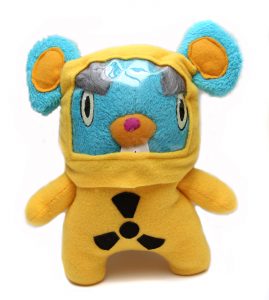Ok guys. So we have decided it was time to start writing some critical articles about art toys. Opinion pieces, reviews and the like. Art toys are dear to us at ‘Art Whore’ – being the very reason the site was established back in 2012 when we interviewed resin slinger Peter of ‘Killer Bootlegs’ fame.
We established ‘Art Whore’ as there was nothing around back then that was online and free to access which provided interviews or further knowledge about the developing resin toy scene, and the greater art toy scene in general. So we started interviewing the artists involved. But just interviewing. Apart from a few guest reviews by Ms. Ramsey and Mr. Kevin Malone we have been reluctant to get critical… We just didn’t feel we knew enough. Had the knowledge.
However, we now feel a similar gap currently exists with regards to critically evaluating art toys – and we are willing to get involved. Yes there are news sites noting new releases, yes there are unboxing videos, yes there are podcasts and yes there are some critical pieces out there – see a list of links to relevant sites at the end of this piece. However most of the currently available media is just lust or hate for a particular piece – with little to no critical commentary.
Now, with that said, so as to not just arbitrarily start blasting our opinions – we felt it was best to start with a general FAQ explaining what we feel art toys are and how we will go about critiquing them.
Read it all, below…
Critiquing Art Generally
Well i guess first we need to address the big fat purple elephant in the room… The “S” word. Cause… Well… Yeah. All art is subjective. That’s the jumping point.
From there, well… people should be able to have their opinion and explain it. They should also outline as many facts about the work as well – the medium, maker, genre, stuff like that.
This is so others can know why and how the opinion came to be and what the work is. To make the opinion less arbitrary. To encourage further discussion. To pass on knowledge. Simple.
So we can have our subjective opinions – but we must explain them. Or else risk looking like a madman screaming into the darkness…. Noted.
What is An Art Toy + How can they be Critiqued?
Now to the medium being critiqued: Art Toys aka Designer Toys. They are a tricky beast but their very name posits how they are to be judged – that is, both as toys and as art. But how does that work? What is an art toy? How can they be critiqued? Let’s break it down:
To be a good toy? Something called ‘playability’ is key. Does the toy have moving parts? Accessories? Can the toy be posed and stood? Will the toy easily break if played with? These factors are all pretty much objective values.
To be good art? Well… That’s were the subjective part comes in. For us – good art provokes a reaction. Provokes thought. Shows us something new. Simple as that really.
From there we can say that if a self proposed art toy fails to be art, yet still possess almost perfect playability. It would still be a toy. Similarly, if a separate art toy is art, but fails to have any playability – well. Then it is no longer a toy at all. It is art. It is design. It is really a sculpture. It isn’t a toy.
Sure this is mere semantics – but it is an important principal we will follow.
And an example to explain all this? To easily set out what an art toy is – for us? Ok. We will use what may seem like an odd example. And it is. But it is also a perfect one…
So let’s jump back in time over a hundred years to 1892 in the Kingdom of Russia. Well. The king. The tzar. Alexander Romanov III – needs a present for his wife. Ms. Empress Maria Feodorovna. Something unique. Something amazing. Well the King’s family have been patrons of fabled manufacturer Faberge for years. Since they began in 1842 in fact. And the tzar has a tradition of gifting his wife highly ornate jeweled Easter Eggs, for, well… Easter each year. And each egg includes a surprise inside! Usually a statue or piece of jewelry.
… and yes. That does mean ole ‘Kinder Surprise’ stole their main selling point too. Ain’t nothin’ new under the sun as they say…
Anyhow. Back to the point…
That year – 1892, upon the King’s order, Faberge outdo themselves. They make the usual egg – all highly ornate, white and diamonds. But it’s the surprise inside this year’s egg which is of importance. It’s an automaton. A moving mechanical device. Of what? Well an elephant! Complete with rider, moving parts and the ability to walk. Just wind it up and watch it go! Ha!
(Photos of the 1892 Faberge Easter Egg + automaton, below)
The object above – the Egg + Elephant Automaton is art. We can’t deny that. It’s one off. It’s handcrafted. It’s beautiful. It provokes thought.
Yet for all it’s seeming fragility and monetary value… It’s meant to be played with as well. For the work to be held in human hands. For the small elephant automaton to be taken out of the egg. The egg sat down. The automaton held, wound, and gently placed upon on a flat surface and left. Left for the now tight gears to release. For the elephant to walk. Mechanically.
So the work has major playability. Hell, the playability is inherent to it’s very design and intended purpose. If not played with, the work merely sits. A highly decorative object held aloft by cherubs.
The work isn’t complete, isn’t fully revealed unless it’s played with. This can’t be denied. So it’s a toy too dammit!
It’s art. It’s a toy. It’s an art toy – and debatably these Faberge Automatons are some of the very first and to this day some of the best!
(Video below of the Elephant Automaton in action)
But i here you ask – what are modern art toys? Where are we at now? In 2016? Surely art toys can’t all be made of precious metals, ivory and gems?
Quick Guide to Art Toy Types
* Resin:
Resin art toys are made of resin. And resin? Well there is the natural version made from tree sap. But what 99% of current makers use is a synthetic polymer.
Resin can be produced out of a small space – even at home – making it the most DIY of all the art toy mediums.
(Picture below of some resin art toys from American artist ‘Healeymade‘)
* Keshi:
‘Keshi’ is the Japanese word for eraser. And it has come to mean any and all toys made out of rubber. Think of ‘Monster in My Pocket’ toys from the 90s. Or the ‘Trash Pack’ and ‘Shopkins’ popular today.
Keshi, like resin, can be done at home – however it is a more complicated and pricey process due to the materials involved.
(Picture below of some keshi art toys by Welsh artist ‘Drwg Co‘)
* Sofvi / Sofubi / Soft Vinyl:
Soft, maleable plastic. ‘Sofubi’ originally only referred to toys made in Japan out of soft vinyl, however lately the term has often come to mean any soft vinyl figure – to the chagrin of many purists.
Soft vinyl toys need some form of factory set up for production, so they are less DIY than resin or keshi. As noted Japan was the home of soft vinyl originally, but lately soft vinyl art toys have been made in China and also Mexico.
(Picture below of a sofubi art toy by Japanese artist Leo Sofvi Bouya)
* Wood:
Wood seems to be on the rise as an art toy medium, though it is still a small niche in the scene.
They can be one off works, short runs made at home and also factory produced.
(Picture below of a wooden art toy by New Zealand artist Perry Logan)
* Hard Plastic:
A very small amount of art toys are made out of hard plastic. However, this is usually a medium reserved for ‘collectables’ and / or traditional children’s toys.
As with soft vinyl toys, hard plastic toys are usually made in factories. However hard plastic toys are usually made in larger factories and in larger edition sizes than soft vinyl.
(Picture below of a hard plastic art toy by McBess X Kid Robot)
* Metal:
The least used art toy material. Most likely due to the material and manufacturing costs involved.
Made using machines or hand forged.
(Picture below of a metal art toy by American artist Paul Kaiju)
* Plush + Soft Toys:
Picture a classic teddy bear. All soft, squishy and great for hugging.
We gotta admit though, we are bias against soft art toys as they are virtually impossible to clean. And when buying 2nd hand… Well… Can you ever know what they have seen? What they have soaked up? Can the sin ever be washed away? We doubt it…
With uhh.. that all in mind….. back to the point…
Soft art toys can be hand made at home – picture your grandma knitting away – or machine made. They often incorporate wire and plastic components too, usually for structural reasons.
(Picture below of a beautiful soft art toy by American art group ‘JellyKoe‘)
Mass Produced ‘Collectibles’ Are Not Art Toys
If it is marketed or referred to as a “collectible” there is a 99% chance it isn’t an art toy. Instead it’s merely another toy or sculpture that marketers and the hype machine have jumped on. Usually to make a quick buck.
Classic example from a few years ago? ‘Beanie Babies’.
And today? There is ‘Funko Pop’.
*shudder*
(Picture below of a ‘Funko Pop’)
Toys such as these are not art. Why?
* they are based on pre existing people or characters.
* there is no attempt made for them to be unique or individual – in fact, 99% of ‘Funko Pop’ have the exact same body and head shape.
* they are not handcrafted.
* they are usually produced by large teams, who are part of large corporations.
* they are usually produced in very high numbers, up to the thousands.
(Picture below of a brilliant ‘Funko Pop’ parody – perfectly outlining the issues with the line and ‘collectibles’ generally)
Summary
So we all know the things which we should look out for when critiquing art and art toys specifically. We also know what we are discussing when we talk of art toys. Great.
However, we also feel we should finish by letting you all know the factors we will consider and rules we are imposing when we write about art toys. So you know were we are coming from as we go from here:
Our Toy Critique Rules
- Toys reviewed must have been held in hand by the reviewer. (This is to ensure fair and accurate reviews – often toys look great in a pic, but flaws are apparent when in hand and the opposite can also often be true.)
- We reserve the right to form opinions, but not publish formal reviews, of toys we haven’t held (This is to enable us to rant freely occasionally.)
- If the toy is primarily marketed at children – it isn’t an art toy.
- If it has no playability – it isn’t an art toy.
Factors to Consider When Critiquing Art Toys
- Can it stand?
- Can it be posed and stand in multiple positions – such as sitting?
- Can it be played with?
- Is it easily breakable?
- What’s the sculpt and design like?
- Is it an original idea, a loving tribute, or mere re-hash?
- What’s the custom / paint work like – if any?
So with alla that in mind – stay tuned for art toy reviews and critical pieces popping up at ‘Art Whore’ guys!
—————————————————————————————————————————————————
—————————————————————————————————————————————————
Links to Current Known Art Toy Review + News Sites / Podcasts / Videos
- Clutter (website and hard copy magazine)
- Spanky Stokes (news blog)
- Soft Toy Hobby (news blog)
- The Toy Chronicle (news blog)
- Toys R Evil (news blog)
- Go Figure News (news and article site)
- coART (critical art toy site)
- Tenacious Ninja (news + review blog)
- Toy Break (video news + reviews)
- Marsham Toy Hour (podcast)




